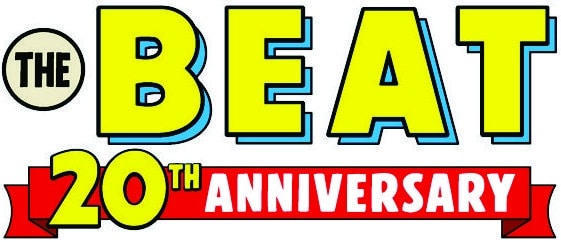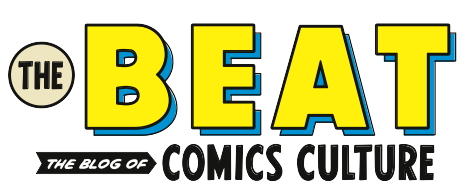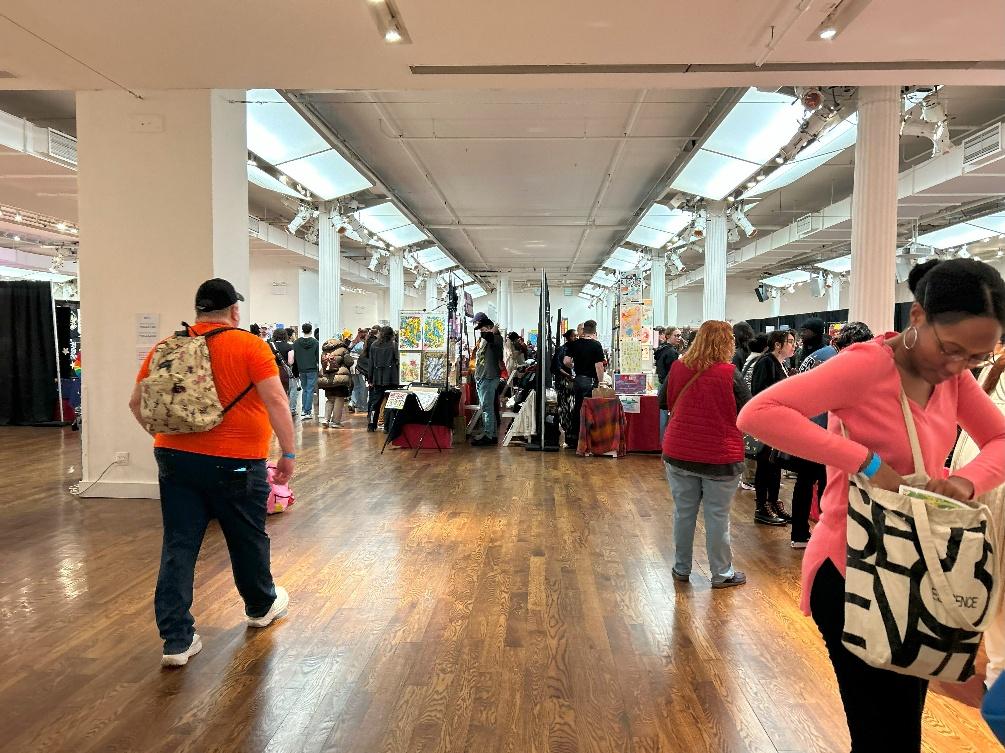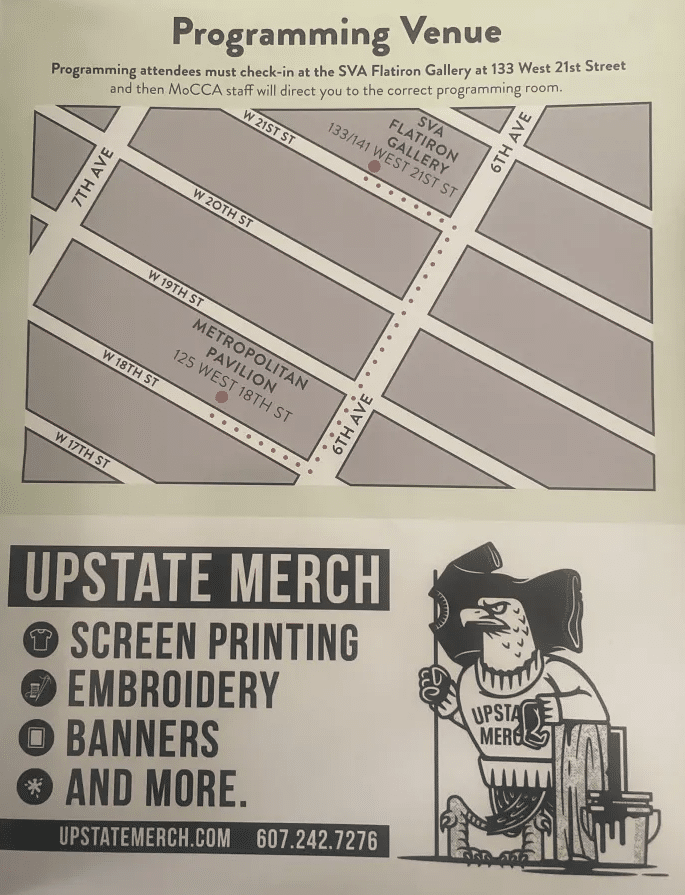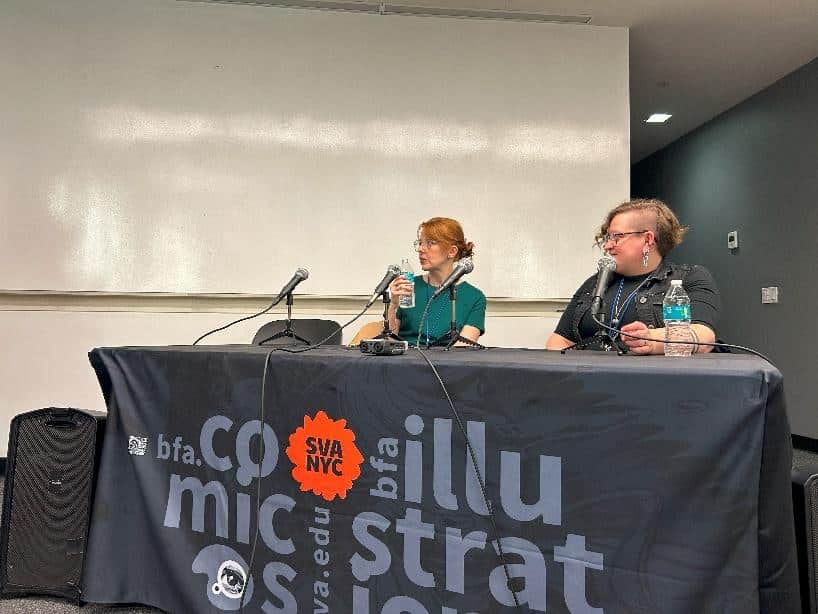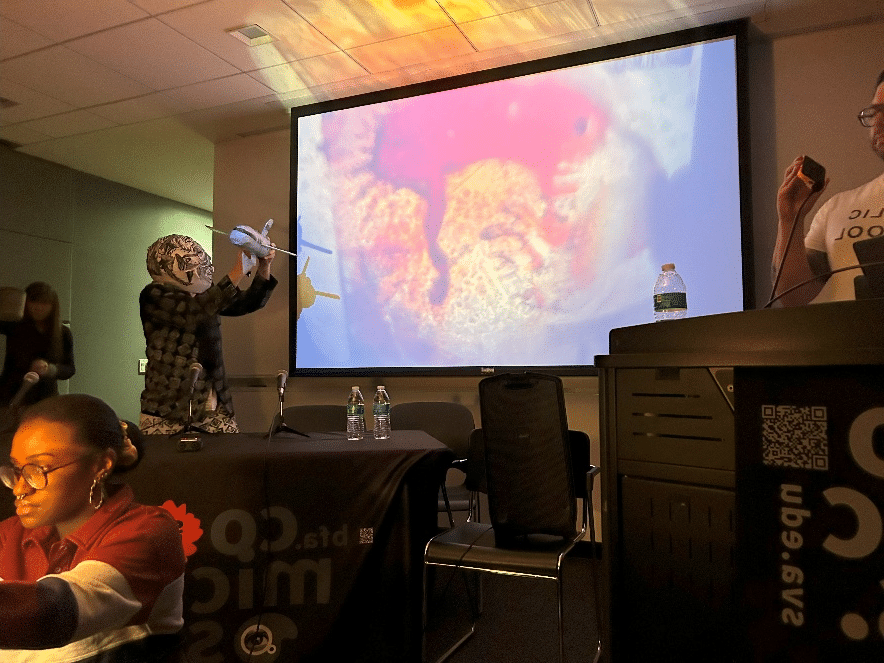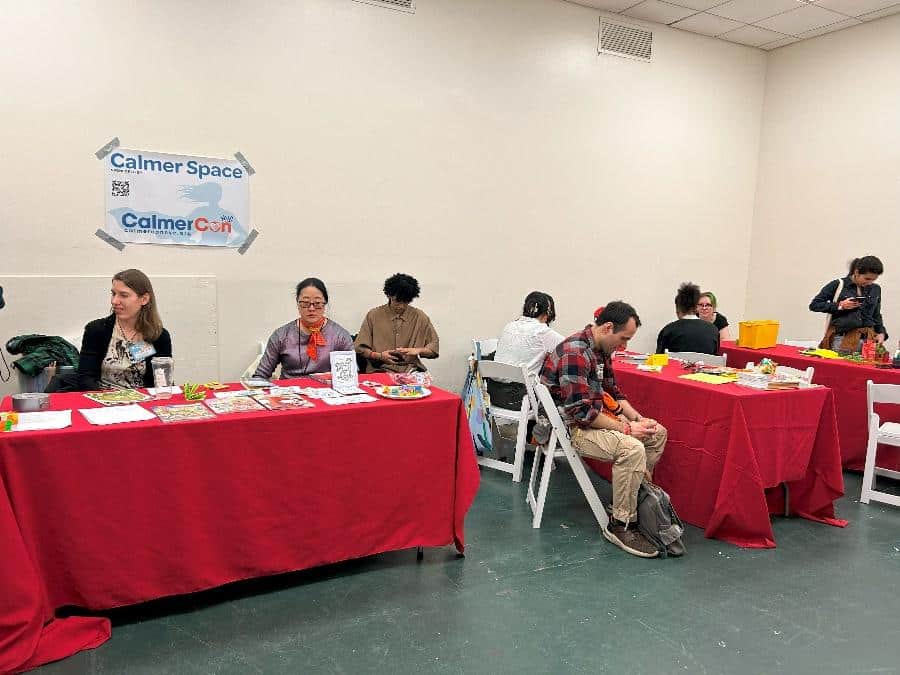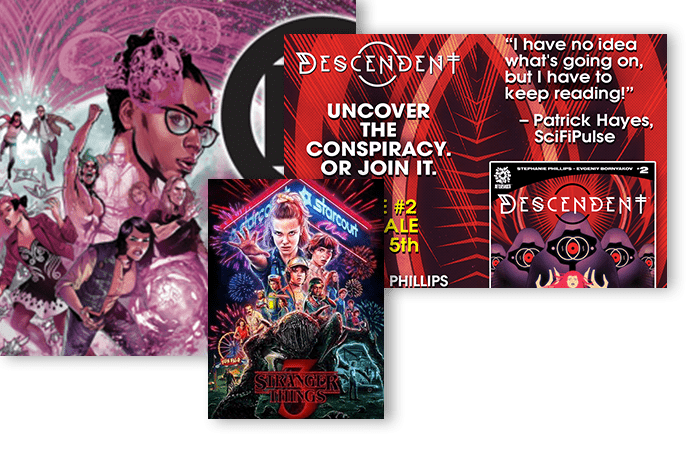by Samuel Edme
[Editor’s note: we cover a lot of comics events here at The Beat and with series we aim to take a more qualitative look at some of the many comics events out there.]
With March this year comes typical Madness and festivities. For some of us indie comic and illustration enthusiasts like myself, particularly on the East Coast of the U.S., the Society of Illustrators-hosted MoCCA Fest is an emblematic hallmark of the month. Taking place over the weekend from March 15-16, this year brought together over 9,000 attendees and 500 exhibitors of chiefly alternative/small press publishers, art school collectives, and independent artists.
Location
In its 23-year history, MoCCA has been through four venue changes: 69th Regiment Armory (2009-2014) from its original Puck Building (2002-2008) location; Center548/High Line Hotel (2015); and Metropolitan West (2016-2019) before returning from a two-year in-person hiatus (due to the COVID outbreak) in 2022 at the Metropolitan Pavilion, where the event has been held ever since. Well, to be precise, the exhibitor’s space is at the Metropolitan Pavilion on W. 18 St. between 6th and 7th Ave in Chelsea. Panels took place at the parallel-facing SVA Flatiron Gallery and SVA MPS Branding buildings three blocks over at W. 21 St. It’s not ideal, but it’s still closer than walking from one end of the Javits Center to the other.
Being in the middle of Manhattan, the area is a public transportation nexus with the F, M, 1, A, C, and PATH train lines situated around the 23rd St corridor; the R & W lines at 28th St; and several bus stations scattered throughout. For disabled and limited mobility attendees, there’s the 14th St station by W 15th St (1, 2, & 3 lines) and Union Square 0.7 miles away. There’re a myriad of eating/drinking options nearby, so no need to worry about being stuck with overpriced junk food – not that you would find any food at an indie comic convention.
Despite these strengths, the event organizers could make some improvements directing people. Where credit is due, the guidebook provides a useful map for navigating the Pavilion and the other buildings. However, there was a lack of signage surrounding any of the venue locations to guide attendees who might be confused on where to enter, especially for the MPS Branding building, which has no visible sign at all. Had there been more volunteers standing outside, I probably wouldn’t have been as late to a few of the panels.
Programming
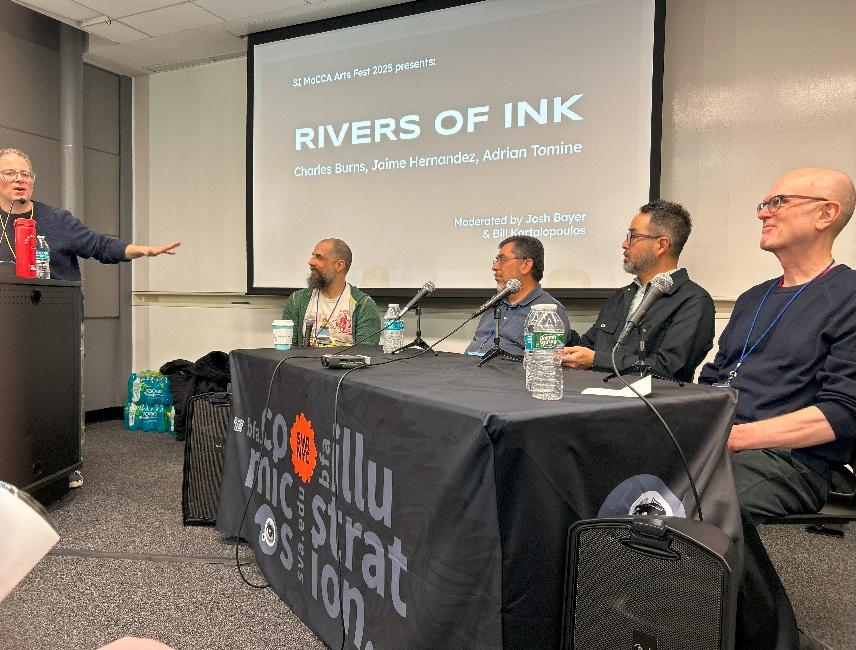
As with years prior, panels took place between the 1 and 4 PM hours. To ensure I allocated equal time between the programming and the rest of the show, I made it a rule of mine to attend two panels per day. Special guest appearances this year included Michael DeForge, Linnea Sterte, Bianca Xunise, Adrian Tomine, Charles Burns, and Jaime Hernandez, the latter three of which were featured in the Saturday panel “Rivers of Ink” moderated by Bill Kartalopoulos and Josh Bayer, where they reflected on their decades worth of work and influences. This all-star panel was one of those, and it was the first time I saw any of the featured cartoonists in person. With the juggernaut trio featured, the room was completely packed with enthused fans to the point it couldn’t take any more people less than halfway through. I was lucky enough to have a front-row seat to myself since I sat through a previous panel in the same room, that panel being “Uncanny Apparitions” with Julia Gfrörer and Boum, moderated by Sally Madden, which turned out to be an inadvertently improvised marvel. As with almost all, if not all, of the panels, it was expected that there would be a slideshow to accompany the talk, but due to technical difficulties, the projector was not working. Thus, all the visually relevant material had to be described, fitting in perfectly with the theme of the unseen and intangible in Gfrörer ‘s and Boum’s works.
On Sunday, I attended the “Comic Strips Today” panel, hosted by Karen Green and featuring syndicated cartoonists Keith Knight and the Six Chix artists Bianca Xunise, Isabella Bannerman, and Marisa Patrinos, talking about how newspaper comic strip artists try to remain socially relevant in the modern age, when the audience is divided between between aging print readers and younger audiences who mainly consume content online.
<img class=”wp-image-524214″ src=”https://www.comicsbeat.com/wp-content/uploads/2025/04/a-group-of-people-standing-around-a-table-with-mic.jpeg” alt=”A group of people standing around a table with microphones
AI-generated content may be incorrect.”>
I also attended R. Sikoryak’s exemplary comics reading showcase Carousel. Going on since 1997, the return of this multimedia spectacle boasted a robust lineup comprising the likes of alt-comix darling Caroline Cash, rising talent Bim Eriksson (whose debut book, Baby Blue, I’d highly recommend), Olivia Fields, John Vasquez Mejilas, and Katie Skelly. No complaints here.
Back at the Pavilion, a few art school booths hosted workshops and portfolio reviews throughout the day. SVA, in particular, attracted a large crowd with their free risograph workshop, which spanned from college-aged individuals to attendees interested in trying out something new.
Layout & Exhibitors
<img class=”wp-image-524216″ src=”https://www.comicsbeat.com/wp-content/uploads/2025/04/a-floor-plan-of-a-building-ai-generated-content-m.jpeg” alt=”A floor plan of a building
AI-generated content may be incorrect.”>
The exhibitors’ floorplan was neatly organized, containing primarily parallel corridors, while the centermost parts and edges were spread out and divided into groups of 3-4, which certainly helped diminish the overwhelming feeling of crowdedness during MoCCA’s peak hours. Better yet is their newest addition, Calmer Space, a neurodivergent-accommodating lounge area for attendees to decompress. Materials such as sensory toys and activity books are provided for use inside the space and can be taken home.
In terms of publisher representation, the larger alternative comic houses such as Fantagraphics, Drawn & Quarterly, and Sliver Sprocket were vending and holding author signings throughout the day. Small press operations were thriving, with some notable standouts being the Chinese comics publisher Paradise Systems, Glacier Bay Books (alt manga), and Living the Line Books. Shoutout to my friends at Cram Books as well!
<img class=”wp-image-524218″ src=”https://www.comicsbeat.com/wp-content/uploads/2025/04/two-men-wearing-face-masks-ai-generated-content-m.jpeg” alt=”Two men wearing face masks
AI-generated content may be incorrect.”>
While many self-published/independent artists had their own tables, due to the fest’s prohibitively expensive $500 tabling fee, many vendors could be seen sharing spaces or even putting up unofficial stands outside the Metropolitan Pavilion. This was particularly prevalent among students, most of whom appeared under official art school collectives. SVA, Center for Cartoon Studies, Montclair State University, and Ringling College of Art & Design were among the myriad of institutions represented.
In continuation of recent years’ trends, some corporate and mainstream elements have slipped into MoCCA, conflicting with its indie roots. If Wacom’s presence in 2022 seemed like a stretch too far, Adobe’s is a staggering leap. Fortunately, this was as commercial as it got besides the other event sponsors Penguin Random House’s and Xencelabs’ booths. Most of the sponsorship, otherwise, came from international government, educational, and other non-profit institutions, so it’s relatively safe to say MoCCA won’t be turning to a megacorp expo anytime soon.
Editor’s Note: The Beat was MoCCA’s official media partner for 2025, and the opinions expressed in this piece are solely those of the writer, and do not necessarily reflect the views of the editorial staff.
